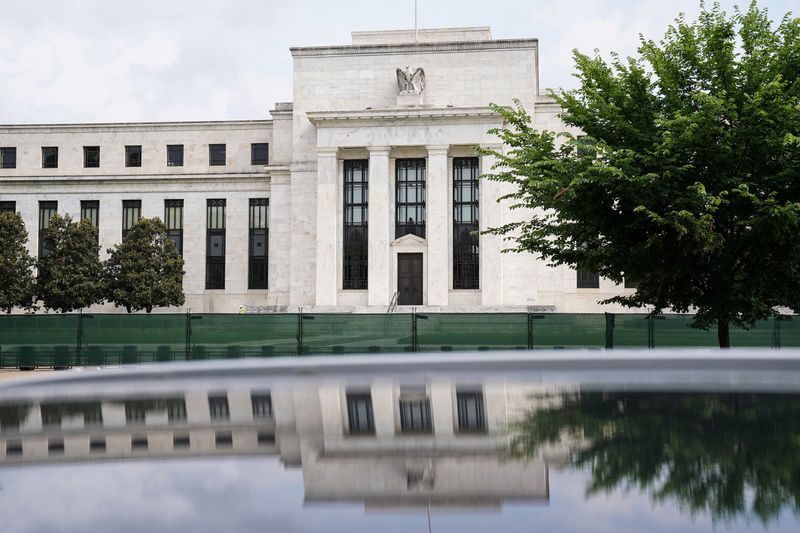Investing.com -- The Fed is likely to rein in its forecast for rate cuts next year as Fed members are teeing up the idea of a higher neutral rate pointing to much shallower rate-cut cycle, MRB Partners said in a recent note.
"Investors should expect the Fed's median forecast of the longer-run (or neutral) policy rate to rise ahead," strategists at MRB Partners said. "The implication is that Fed will ease rates less next year than what it had signaled in the September dot-plot, and what the bond market has been pricing in."
The Fed cut rates by 25 basis points in November after kicking off the rate-cut cycle in September with a jumbo 50 basis point rate cut and forecast. At the September meeting, the Fed provided projection forecasting rates to fall to 3.4% by 2025, and to 2.9% by 2026.
But following a slew of positive economic data and the risk that progress against curbing inflation could be slowing, some Fed members have suggested the neutral rate -- one that neither stimulus nor weighs on economic growth -- could be higher and expressed cautioned on the rate-cut outlook ahead.
Earlier this week, Dallas Fed President Lorie Logan acknowledged the possibility of a much higher 4.5% nominal neutral rate.
"Among widely consulted models, point estimates of the neutral real interest rate currently range from 0.74 percent to 2.60 percent," Logan said. "Adding in the 2 percent inflation target, those figures correspond to a neutral fed funds rate of 2.74 to 4.60 percent."
This is sharp contrast to the Fed's s current estimate of the neutral rate, at 2.9%, which is "clearly too low," the strategists said.
The "realistic estimate" of the neutral policy rate for the U.S., the strategists added, should be at least in the 4.5% range or even higher. The strategists based this on a 3% inflation target and 2% economic growth.
The impact of higher neutral rate is likely to "have significant implications for U.S. Treasury yields and the shape of the yield curve," the strategists warned. They expect yields to move higher and the curve to steepen as a result, with 10-year Treasury yield potentially moving to a 5.25% to 5.5% range.
